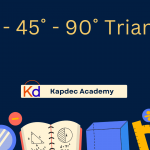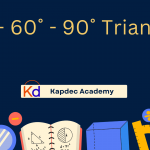Choosing between AP Physics 1 and AP Physics C is one of the most important decisions for students passionate about science, engineering, or math. Both courses are part of the College Board’s Advanced Placement (AP) program and offer college-level rigor — but they differ significantly in terms of content, pace, mathematical depth, and the type of student they suit best.
This blog breaks down the key differences to help you decide which course aligns better with your background, strengths, and future goals.
1. The Core Difference: Algebra vs Calculus
The most fundamental difference between AP Physics 1 and AP Physics C lies in the mathematics used.
- AP Physics 1 is algebra-based, meaning you use basic algebra, trigonometry, and graphical interpretation to solve problems.
- AP Physics C, on the other hand, is calculus-based, requiring a strong understanding of derivatives and integrals to describe motion, forces, and energy more precisely.
If you haven’t studied calculus yet, AP Physics 1 is a better starting point. But if you’re comfortable with calculus or are taking it alongside Physics C, you’ll find the deeper mathematical treatment rewarding.
2. Course Content Overview
While there’s overlap in topics, the breadth and depth differ between the two.
AP Physics 1 covers:
- Kinematics
- Dynamics (Forces and Newton’s Laws)
- Work, Energy, and Power
- Momentum
- Rotational Motion
- Simple Harmonic Motion
- Waves and Sound
- Basic Electric Circuits
AP Physics C is split into two parts:
- Mechanics — Kinematics, Newton’s Laws, Work-Energy, Momentum, Rotation, and Gravitation [1].
- Electricity & Magnetism (E&M) — Electric fields, Gauss’s Law, circuits, magnetic fields, and Maxwell’s equations.
Physics C delves into topics with far more precision, deriving equations from calculus rather than relying solely on conceptual understanding.
3. Mathematical Requirement
In AP Physics 1, problems are approached conceptually and numerically with algebraic manipulation .
Example: Using formulas like F=ma or v=u+ at.
In AP Physics C, the same concepts are extended with calculus tools.
Example: Deriving motion equations from a=dv/dt or analyzing potential energy through integration.
If you love seeing the “why” behind the formulas, Physics C will give you that mathematical satisfaction.
4. Exam Structure and Difficulty Level
AP Physics 1 Exam:
- Duration: 3 hours
- Section I: Multiple Choice (50%)
- Section II: Free Response (50%)
- Emphasis: Conceptual reasoning and experimental design
AP Physics C Exam:
- Duration: 90 minutes per section (Mechanics and/or E&M)
- Section I: Multiple Choice (50%)
- Section II: Free Response (50%)
- Emphasis: Application of calculus in physical scenarios
Physics 1 has a lower pass rate (around 40–45%) mainly because many first-time AP students underestimate its depth. Physics C, though harder mathematically, often has higher pass rates (70–80%) since students taking it are typically more advanced in STEM [2].
5. Which One Do Colleges Prefer?
Colleges value both courses, but AP Physics C carries more weight for students pursuing engineering, physics, or math-related majors. Since it’s calculus-based, it often earns credit for first-year college physics courses.
AP Physics 1, while still rigorous, is more about foundational understanding — ideal for students exploring science but not necessarily planning to major in it.
6. Which Course Should You Take First?
Here’s a quick guide:
- If you’re in 10th or 11th grade and haven’t studied calculus → Start with AP Physics 1.
- What if in 12th grade or already taking Calculus AB/BC → Go for AP Physics C.
- If your goal is Engineering or Physical Sciences, taking Physics C gives you a strong college-level edge.
Many high-achieving students take AP Physics 1 first, then progress to AP Physics C the following year.
7. Workload and Study Approach
Physics 1 demands time for conceptual understanding and lab reports. It encourages students to reason through real-world situations.
Physics C moves faster, expects problem-solving agility, and rewards students who can apply mathematical modeling.
Platforms like Kapdec offer both structured concept lectures and question banks for AP Physics 1 and C, tailored to difficulty levels. This approach helps students transition from algebra-based reasoning to calculus-driven problem-solving smoothly [3].
8. Which One is Right for You?
Choose AP Physics 1 if:
- You’re new to high-level physics.
- You haven’t studied calculus yet.
- You prefer conceptual learning and lab-based exploration.
Choose AP Physics C if:
- You’re comfortable with or currently studying calculus.
- You want to pursue engineering, physics, or computer science.
- You enjoy solving quantitative, derivation-based problems.
FAQ’s
What is the main difference between AP Physics 1 and AP Physics C?
The key difference lies in the math level and depth of physics concepts.
- AP Physics 1 is algebra-based, suitable for students who haven’t taken calculus. It focuses on understanding physical principles and real-world applications through conceptual reasoning.
- AP Physics C is calculus-based, requiring familiarity with derivatives and integrals to solve more complex physical problems. It’s ideal for students who are either taking or have completed Calculus AB/BC and plan to pursue STEM fields.
In short, Physics 1 is broader and conceptual, while Physics C is narrower but more mathematically rigorous.
Which course is harder — AP Physics 1 or AP Physics C?
Both are challenging, but in different ways.
- AP Physics 1 is conceptually tricky because it requires strong reasoning and interpretation skills, especially during free-response questions and lab analysis.
- AP Physics C is harder mathematically, as it integrates calculus into nearly every topic.
Interestingly, the pass rate for Physics C is higher because most students who take it already have a strong math and science foundation. Meanwhile, Physics 1 has a lower pass rate since it’s often the first AP science course for many students.
Can I take AP Physics C without taking AP Physics 1 first
Yes, you can — provided you have a good grasp of calculus and basic physics concepts. Many students directly opt for AP Physics C: Mechanics if they’re strong in math and want to challenge themselves.
However, if you’re new to physics, taking AP Physics 1 first can help you build conceptual confidence before jumping into the calculus-based rigor of Physics C. Some schools even recommend taking both sequentially for a smoother transition.
What kind of math do I need to know for AP Physics C?
AP Physics C heavily relies on calculus — both differentiation and integration. You’ll use derivatives to express velocity, acceleration, and force, and integrals to find displacement, work, or electric potential.
If you’re taking Calculus AB or BC alongside Physics C, that’s usually sufficient. The math itself isn’t excessively advanced, but the ability to apply calculus to physical systems is crucial for success.
Which exam gives more college credit — AP Physics 1 or AP Physics C?
Colleges generally give more credit for AP Physics C since it mirrors first-year college physics courses for engineers and science majors. Many universities accept scores of 4 or 5 on Physics C exams to exempt students from introductory physics classes.
In contrast, AP Physics 1 is often accepted for general science credits or introductory courses in non-engineering majors. So if you plan to major in engineering, physics, or computer science, Physics C offers more long-term value.
How do the topics in AP Physics 1 and C overlap?
There’s some overlap, especially in mechanics topics like motion, forces, and energy.
However, the treatment differs:
- In AP Physics 1, you learn these ideas conceptually and apply algebraic relationships.
- In AP Physics C, you derive those same equations using calculus, exploring the mathematical relationships more deeply.
Physics C also includes Electricity and Magnetism (E&M) — an advanced topic not covered in Physics 1 — where you study electric fields, circuits, magnetic forces, and electromagnetic induction using calculus.
Which course should I take if I want to pursue engineering or physics in college?
If you’re planning a STEM or engineering major, AP Physics C is the better choice. Its calculus-based structure directly aligns with the kind of physics taught in university-level engineering and physical science programs.
However, if you’re still exploring your interests or want to strengthen your fundamentals first, AP Physics 1 is a great starting point. You can always take Physics C the following year once you’ve developed more confidence in physics and calculus.
How can Kapdec help me prepare for AP Physics 1 or C?
Kapdec offers specialized AP Physics courses designed to simplify learning and strengthen exam readiness.
- For AP Physics 1, Kapdec’s program focuses on concept clarity, visual demonstrations, and lab-based understanding.
- For AP Physics C, it provides calculus-integrated lessons, derivation-based explanations, and expert-tested problem banks that mirror actual College Board exam styles.
Kapdec’s structured approach bridges the gap between conceptual and mathematical reasoning — ensuring students not only score high on exams but also understand physics at its core.
Final Thoughts
Ultimately, both AP Physics 1 and AP Physics C can be stepping stones to a successful STEM career — the right choice depends on your mathematical readiness and academic goals.
If you’re serious about mastering either course, Kapdec’s AP Physics programs provide curated video lessons, real exam-style question banks, and step-by-step lab guidance — designed by expert tutors who understand how College Board evaluates conceptual and mathematical clarity.






